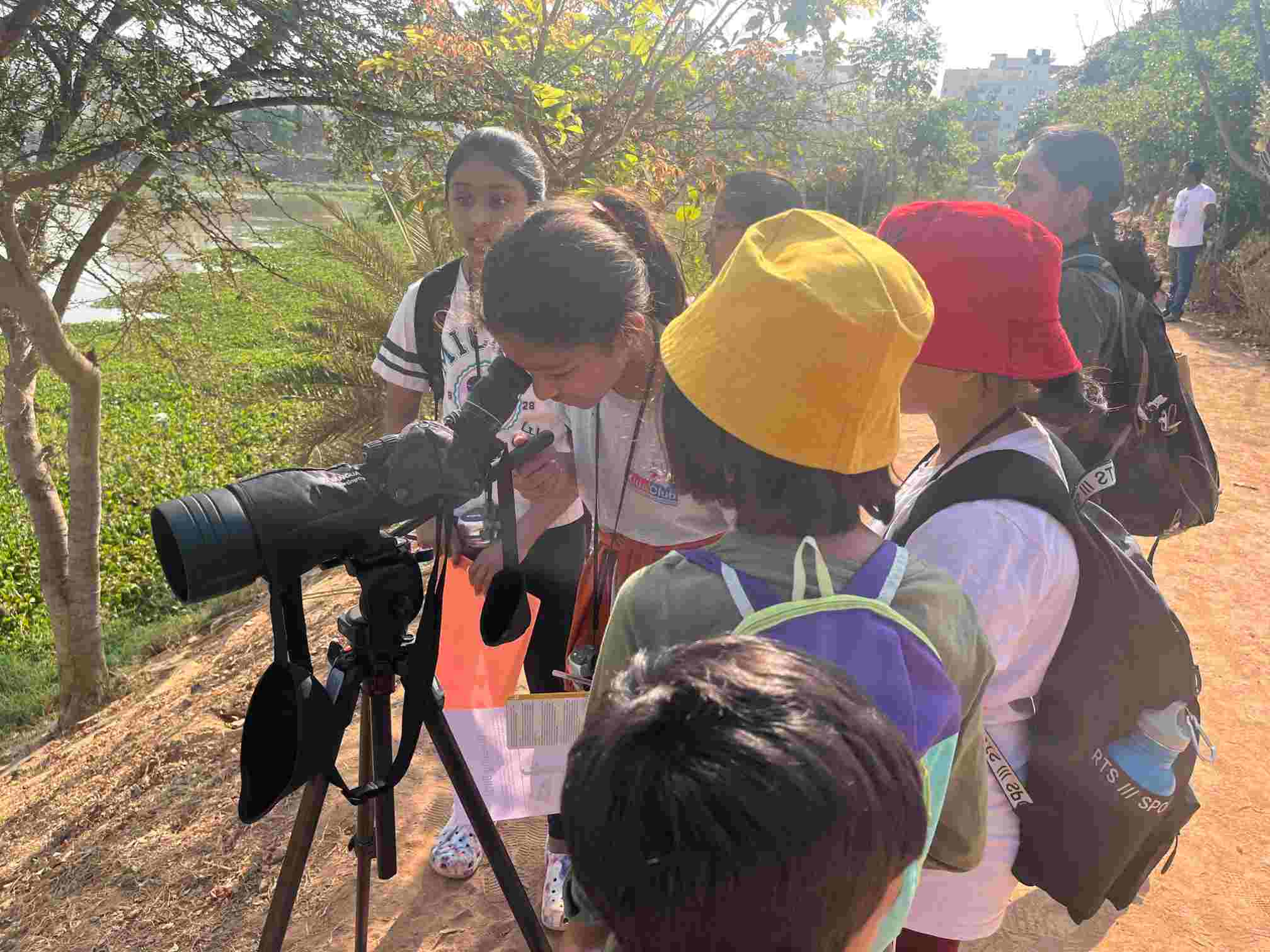Early Bird organises monthly bird walks for children, offering more than just bird identification. These engaging walks blend birdwatching with interactive games, journaling, and hands-on activities. Here’s a glimpse into our most recent excursion at Doddanekundi Lake in Bengaluru.
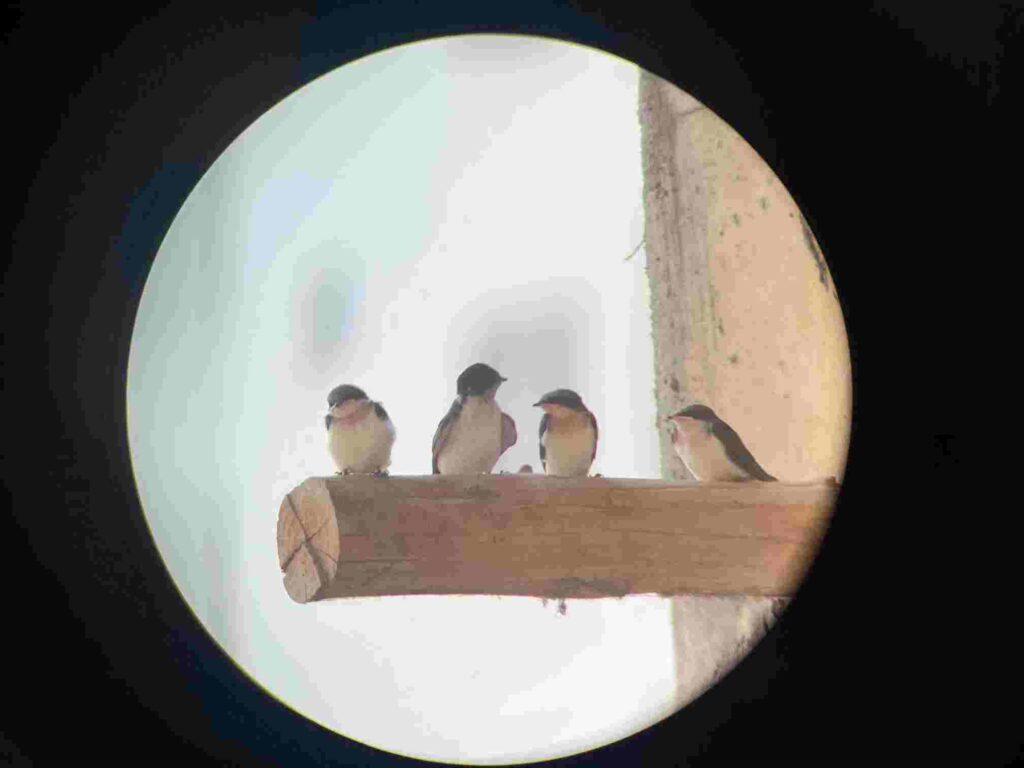
The morning commenced with a brief round of introductions, followed by the formation of three groups: two composed of children and one solely for parents. While the walk catered to the children, we organised a separate birdwatching session for parents guided by experienced birders, Deepa Mohan and Shalini Ukunge. Our journey began with observing a pair of wire-tailed swallows nesting beneath a bridge. Utilising a spotting scope, both groups took turns marvelling at the swallows and their nest from a safe distance.
Subsequently, we directed our attention to a majestic Peepal tree for some time, where we observed a diverse array of birds engaged in various activities such as nesting, foraging, and vocalising. Notably, we spotted two pairs of black kites nesting and observed them shuttle between their nests and an adjacent bare tree, collecting twigs for construction. The winter visitors, rosy starlings, provided a constant chorus of chirps, accompanied by common and jungle mynas. Parakeets flitted around, joined by coppersmith and brown-headed barbets.
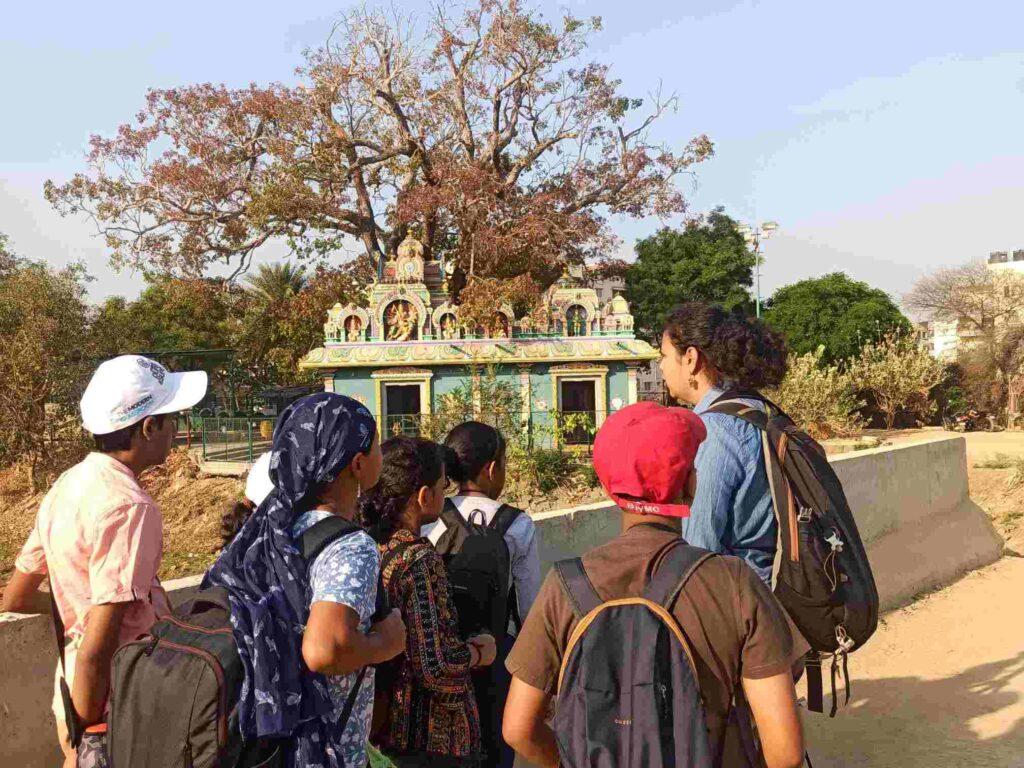
Following this, we delved into the theme of the walk – the life cycle of birds. We discussed the various stages from egg to chick to juvenile to adult, emphasising the crucial aspect of breeding in the life of an adult bird. We proceeded to observe waterbirds, including a purple swamphen feeding on aquatic plants and a purple heron with its distinctive elongated neck. Additionally, we spotted camouflaged Indian pond-herons, cormorants, and egrets.
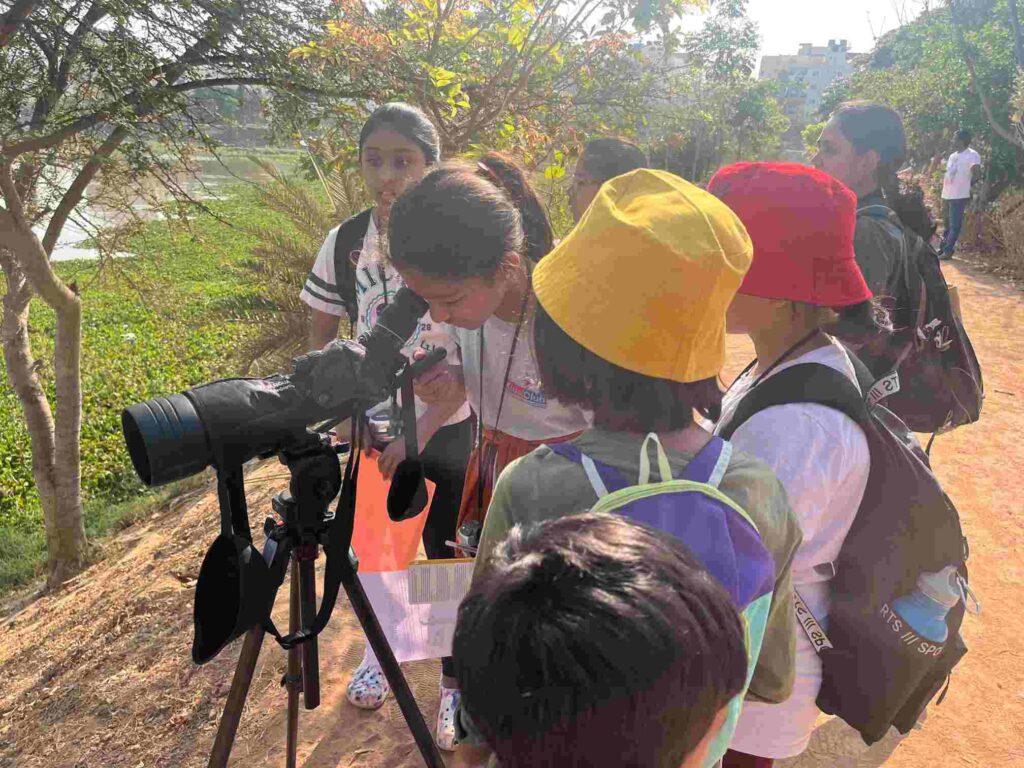
Participants then engaged in the “Breeding Birds Game,” inspired by the breeding codes on eBird checklists and the Bird Bingo. They spent 15 minutes identifying signs of breeding birds in the vicinity.
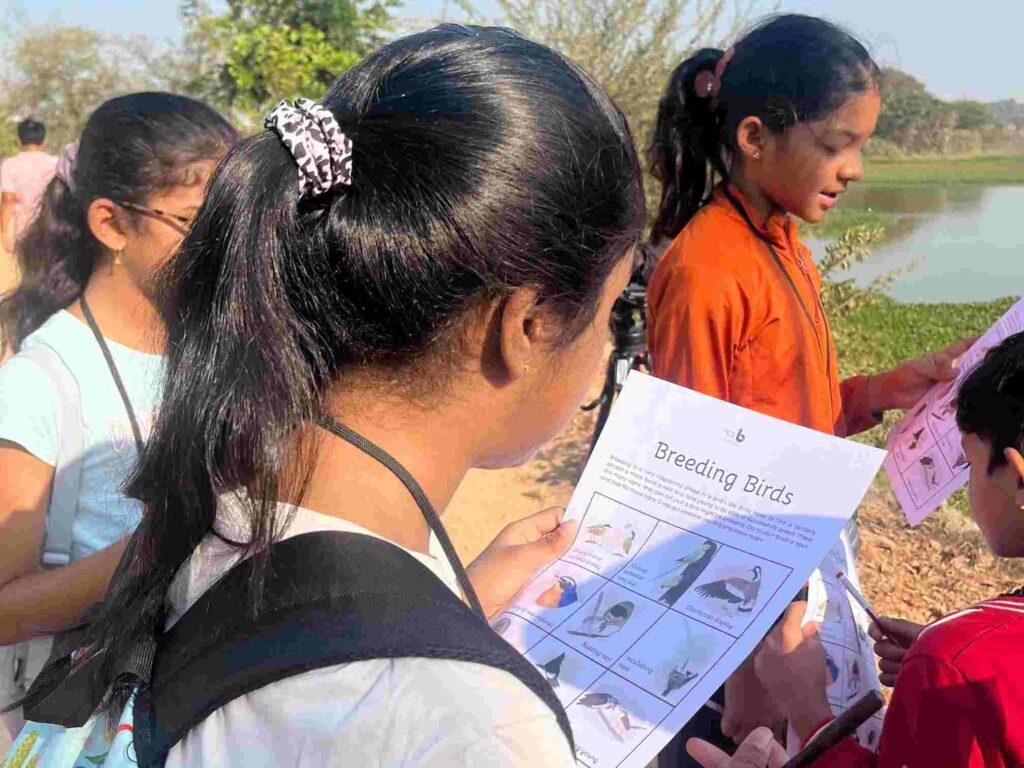
Encountering another aged tree hosting a white-cheeked barbet’s nest, we observed a cormorant perched atop, wings outstretched, and a coppersmith barbet probing the trunk. A purple-rumped sunbird pair and a duo of black drongos also made an appearance. Participants also traced the oriental magpie robin based on its call. Additionally, they were excited to see how the rose-ringed parakeet was gripping the fruits of jungle jalebi while feeding.
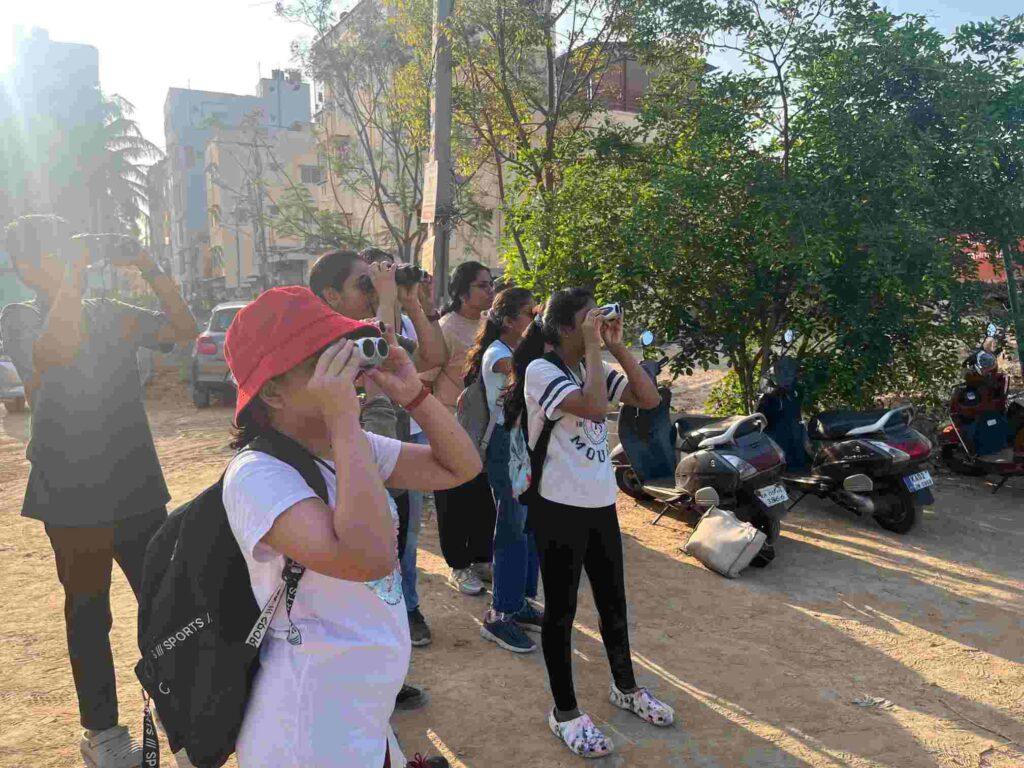
Next, we initiated the “Bird Survivor Game,” where participants divided themselves into four teams and navigated through six rounds representing different stages in a bird’s life. The game provided insight into the challenges birds face in nesting and breeding successfully. Alongside birds, we also got a chance to talk about the dragonflies as one participant mistook the dragonflies perching on the water hyacinths for some tiny bird. As the walk concluded, participants gathered for a sharing circle to share their highlights. With the sun shining brightly, we began our return journey towards the lake entrance, encountering ashy prinias, cinereous tits, and a purple-rumped sunbird nest along the way.
At the entrance, educational materials were distributed, and parents were invited to provide feedback. Group photographs were taken, with cheerful exclamations of “bar-headed Geese!” replacing the customary “cheese!” pose.
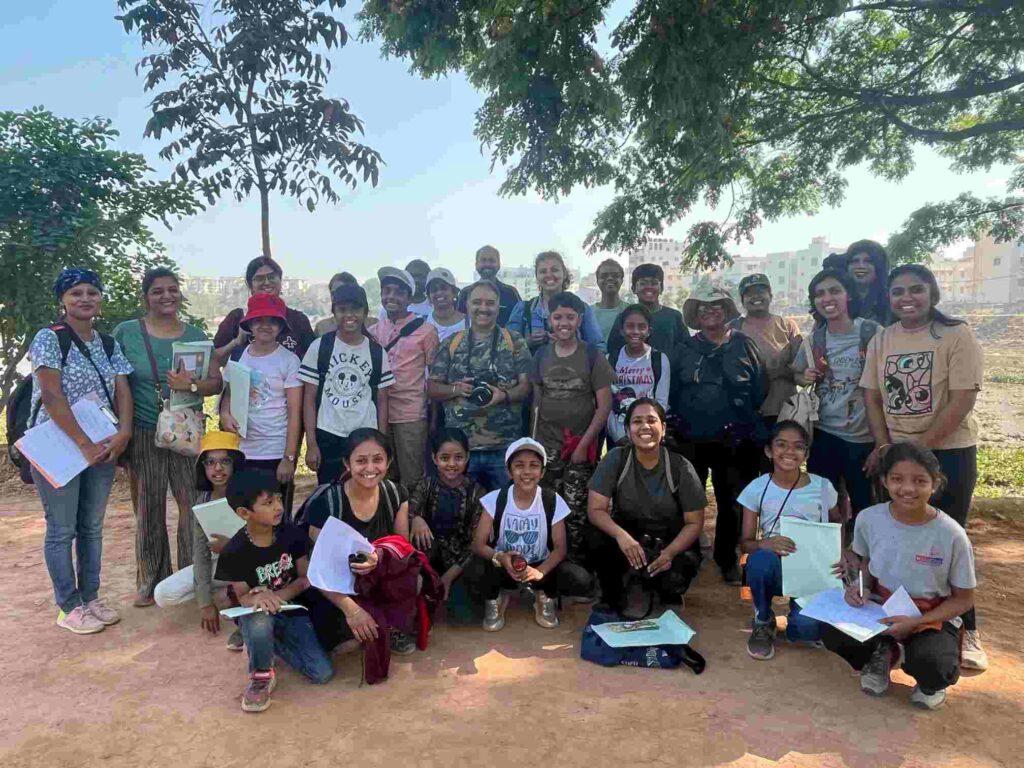
A big thanks to all the participants, parents and volunteers for making this walk a success!

